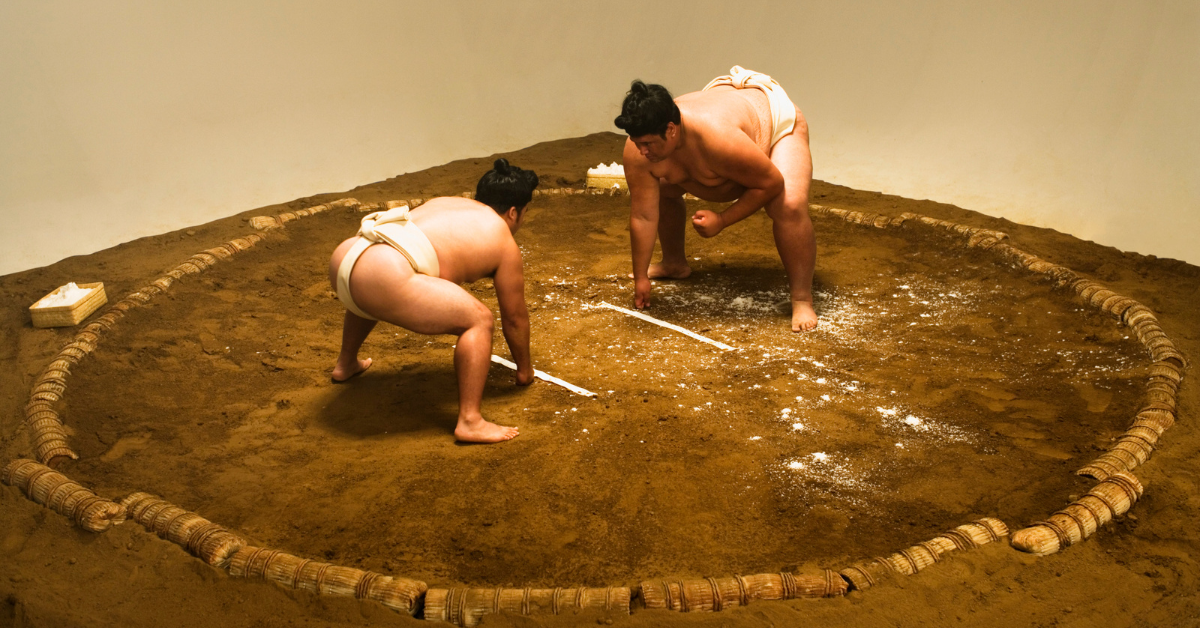When you think of sumo wrestling, you might picture traditional Japanese rikishi. However, American-born sumo wrestlers have left a lasting impact on the dohyo. From the massive presence of Konishiki to the trailblazing promotion of Akebono to Yokozuna, these foreign athletes redefined what was possible in the sport.
What is an American Sumo Wrestler?
An American sumo wrestler refers to a person born in or holding citizenship from the United States who enters the traditional Japanese world of sumo wrestling. Sumo is more than a sport; it is a symbol of Japanese tradition and spirituality, requiring not only physical strength but also cultural understanding and adaptability. Many American sumo wrestlers, particularly those from Hawaii, have stood out due to their physique and athleticism, attracting great attention especially between the 1990s and early 2000s.
Here is a table highlighting common traits among American sumo wrestlers:
| Category | Description |
|---|---|
| Place of Origin | Primarily Hawaii |
| Physical Build | Often over 190cm tall and 200kg in weight |
| Motivation | Backgrounds in wrestling or scouting invitations |
| Required Skills | Japanese language, group living, and discipline |
Legendary American Sumo Wrestlers
Among American sumo wrestlers, KONISHIKI Yasokichi, Akebono Tarō, and Musashimaru Kōyō are the most iconic. Their achievements not only include numerous titles but also major contributions to the internationalization of sumo.
| Wrestler Name | Origin | Highest Rank | Debut Year | Promotion | Major Achievements |
|---|---|---|---|---|---|
| Konishiki Yasokichi | Hawaii | Ōzeki | 1984 | 1989 | 11 runner-up finishes, overwhelming presence |
| Akebono Tarō | Hawaii | Yokozuna | 1988 | 1993 | First foreign-born Yokozuna, 11 championships |
| Musashimaru Kōyō | Hawaii | Yokozuna | 1989 | 1999 | 2-time Most Wins of the Year, 12 championships |
Their rise prompted public debate about whether foreign-born wrestlers could achieve the rank of Yokozuna and played a pivotal role in opening sumo to the world.
The Impact of American Sumo Wrestlers on the Sport
American sumo wrestlers have had a profound effect on the sumo world. Their presence elevated sumo’s visibility in foreign media, introducing the sport to new audiences across the globe. As a result of their influence, the Japan Sumo Association implemented a policy limiting foreign-born wrestlers to one per stable, reflecting the magnitude of their impact.
The table below outlines the influence of American sumo wrestlers:
| Area | Impact |
|---|---|
| Global Exposure | Sumo featured in international media |
| Policy Reform | Limit on foreign-born wrestlers per stable |
| Fan Base Growth | Broader international viewership |
| Technical Styles | Highlight on pushing-style sumo and power tactics |
Cultural Adaptation and Challenges
Joining the sumo world requires strict adherence to Japanese customs, language, and discipline. American wrestlers are no exception, and their success stems from adapting to everything from hierarchical relationships to shared communal life in the stable. Daily life revolves around Japanese language, and strict etiquette and lifestyle rules must be followed without exception.
The following table outlines areas of adaptation and their importance:
| Adaptation Area | Priority | Description |
|---|---|---|
| Japanese Language | High | Required for all communication and understanding |
| Etiquette & Manners | High | Greetings, respect for seniors, and traditional rules |
| Diet & Meals | Medium | Chanko (hot pot), scheduled meals, traditional foods |
| Training Routine | High | Several hours of intense training, mental resilience |
The Decline and Future of American Sumo Wrestlers
In recent years, there has been a noticeable decline in the number of American wrestlers entering sumo. This is attributed to the growing diversity of sports opportunities and a decline in sumo’s appeal among younger generations. Currently, most new foreign recruits come from Mongolia or Europe.
Despite this, the legacy of past American wrestlers remains strong. To revitalize interest, the Japan Sumo Association could strengthen international scouting, host overseas sumo exhibitions, and offer cultural exchange programs. By creating pathways for international participation, future generations of American wrestlers may once again thrive in the sport.
Conclusion
American sumo wrestlers have blended foreign values into the traditional Japanese sumo culture, forging a path that was once thought impossible. Legends like Konishiki, Akebono, and Musashimaru not only won matches but became symbols of cultural exchange. Although their numbers have declined, the road they paved continues to influence the next generation.
It is hoped that once again, a new American wrestler will emerge, step onto the dohyo, and build a new legacy. Sumo’s global future continues to expand, and the contributions of American wrestlers will remain an integral part of that journey.





コメント